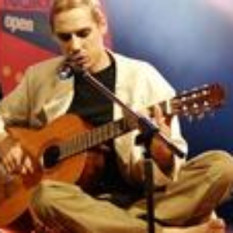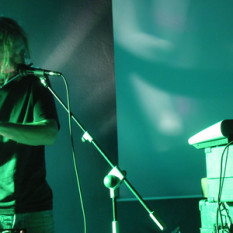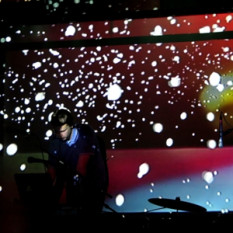Kago was the second level travelling character from Kurt Vonnegut's Book "Breakfast Of Champions". Kago's music shares some absurdly psychedelic sadness and empathy with Vonnegut's novels and Brautigan's poetry. It also means "travelling chair" in older japanese. Every piece of music is a travelling in a way.
The only member of Kago, Lauri Sommer (from Viljandi,Tartu and Sänna, Estonia) is more known as a poet and literary scholar. As a musician he began somewhere in beginning of 90s and has played punk, folk, indie, made dadaistic electro, sang in church choir and learned something about English folk songs. In the new millennium he has joined the world's only seto male choir Liinats'uraq to perform ecstatic and old music with quite a weird harmonies.
Kago has existed since the spring of 2000 and began as a arhythmic cartoon electro project to create more friendly and personal atmosphere in Kago's far too urban flat in Tartu. After moving to his childhood town, Viljandi, music took more pastoral and mixed twists. Piano instrumentals, acoustic material, which was sometimes treated electronically, folk songs, childish instrumentals etc formed the best part of Kago's 2003 debut "Piimash" (world with no literal meaning, found while looking at the partly hidden of milk-chocolate's (piimashokolaad) cover). After releasing this, Kago's sound experiments continued - he added some rhythmic parts made with old darling dictophone, homemade deep-dull sounds, stretched bits, unexpected voices etc. And some inspiration comes from elsewhere. Places. Glowing people. Dreams and altered states. Recent musical discoveries include Fennesz, Animal Collective, Jose Gonzalez, Sylvain Chauveau, Erko Niit, Novella Matvejeva, Eluvium, Meelika Hainsoo, If You Are Not Metal You Are Not My Friend, Jaak Tuksam, Julie Doiron, Joanna Newsom, Eva ja Maria, Juana Molina, Lau Nau, Jolie Holland, Ariel Pink, Vashti Bunyan etc.
The title of CD "Köngerjönks" was unexistent thing older kids told the youngest one to ask from the seller of the food shop in Tallinn somewhere in the 1940s. They did this repeatedly. At first seller was polite but afterwards got mad and shouted: "Huh, you bastard, get outta here, we don't sell this, aarrhghh…there is no such a thing as köngerjönks!" But now there is - fantasy has come true at last.)…and some shops will even sell this. Many of the songs were firstly created in his grandparents lonesome farm in Sänna. It is situated in southern Estonia and as Lauri has dealt with southern things a lot (thinking about mentality of hilly and rural south, re-learning, speaking and singing the võro-seto dialect, spending precious days of experiment near the nature's heart etc) name "Kago" is starting to mean more like "southeast" in seto dialect. Seto land is the culturally unique (old pagan traits and beliefs blended together with Russian orthodoxy) part of southern Estonia where Kago's grandparents came from. Distant and remixed echoes of this old way of being are felt and heard sometimes. Transition is pretty nonlinear, but Kago's music is as far from the mainstream of Estonian pop as Seto land (in southern border next to anarchic empire of Russia) is from Estonia's capital Tallinn (in northern coast of Estonia). This is Fringes - mixture of childish and weirdgrown folkhead fantasies, longing for imaginary purity, sounding like the radio recordings made with primitive soviet tape recorder and heard from another room or through another state of mind. Let's hope You'll get there…
Read also Lauri Sommer's article "Dictaphone Shamanism" .
Lahat ng mga album
Maaari kang makahanap ng impormasyon sa pamamagitan ng pinakamahusay na search engine ng musika - Muzlan.top 😊Ang lahat ng mga materyal na hiniling na "Kago" ay magagamit sa pahina Kago
Oo naman. Maaari kang makinig ng mga track sa pahina na Kago
Oo naman. Maaari kang mag-download ng mga track sa pahina Kago
Ang pahinang ito ay matatagpuan ng mga query: Kago mp3 download, Kago all mp3, Kago flac, Kago free download, Kago songs download



